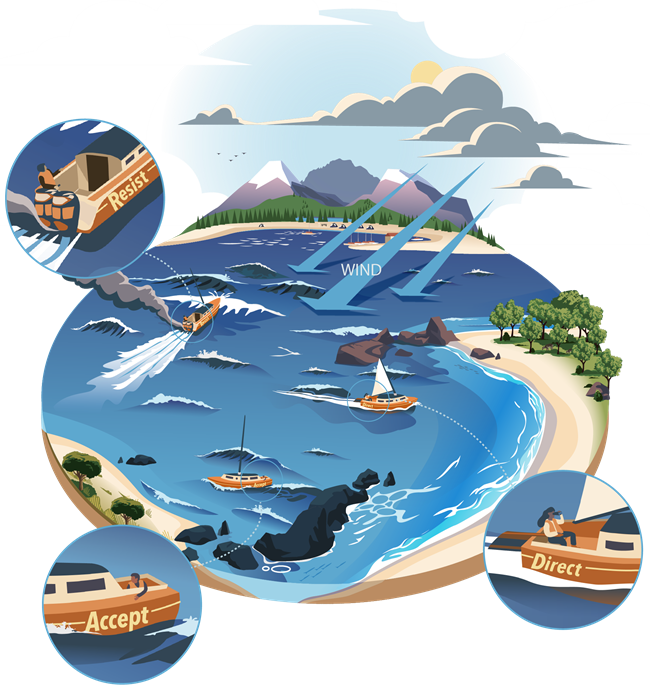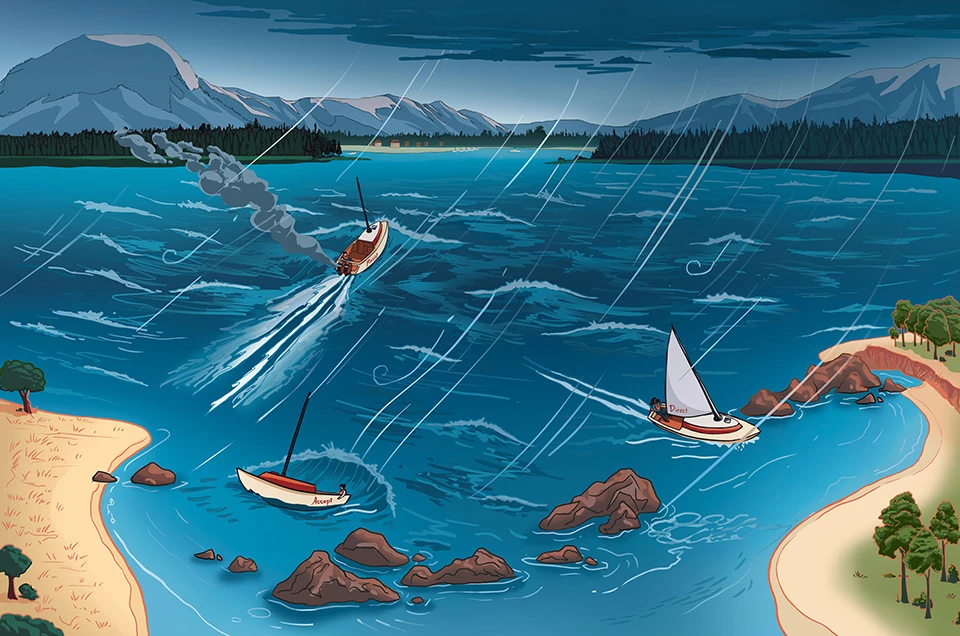What is RAD?
Park managers today face growing challenges. As climate change interacts with other stressors such as land use change, pollution, and nonnative species, ecosystems are changing beyond the bounds of historical variability. These changes are increasingly difficult to resist. Thus, managers are thinking more broadly about how to effectively conserve resources in this rapidly changing world. In this context, the resist–accept–direct (RAD) framework helps decision makers make informed, purposeful, and strategic choices. This tool is simple and flexible, complements other important climate change adaptation approaches, and applies to a wide range of decisions that managers must make as they steward transforming ecosystems.
In short, one can respond to the trajectory of change by resisting (working to maintain or restore based upon historical or acceptable current ecosystem conditions), accepting (allowing an ecosystem to change without intervening), or directing (actively shaping ecosystem change toward preferred new conditions).
Consider the analogy of a sailboat being pushed away from its home port by strong winds (right). Each option differs in terms of costs and outcome:
- To accept is to lower the sails and allow the boat to move with the winds, arriving wherever they lead.
- To direct is to use the winds, via sails and rudder, to steer the boat to a specific new, preferred destination, both far from home port and from where the winds alone would take it.
- To resist is to lower the sail and fight the prevailing winds, using a motor to attempt to return to home port.
Where does the RAD framework come from?
The RAD framework emerges from efforts by the NPS and partners since 2015 to hone a tool to foster strategic thinking and clear communication about how to steward transforming ecosystems. It builds on the Resist-Accept-Guide framework first proposed in Beyond Naturalness (2010), though the NPS and partners replaced "Guide" with "Direct" to explicitly recognize the potential for strong intervention at key points to foster preferred new conditions. Initially, the NPS experimented with "Accommodate" in place of "Accept," and this formulation appears in NPS publications as early as 2016 (e.g., Coastal Adaptation Strategies Handbook, Resource Management and Operations in Central North Dakota). Ultimately, Resist-Accept-Direct was chosen because each option may require associated management actions.We continue to share, develop, and apply the RAD framework with a broadening circle of partners. The RAD framework has helped structure the work of the Federal Navigating Ecological Transformation (FedNET) working group, where representatives from federal natural resource management agencies collaborate to develop guidance for stewarding transforming ecosystems.
The NPS and partners have:
- Shared the framework in Resist-Accept-Direct (RAD)—A Decision Framework for the 21st-century Natural Resource Manager
- Incorporated the framework as a key element of Planning for a Changing Climate, alongside Climate-Smart principles and scenario planning
Learn more about RAD
The RAD Framework has also been central to numerous recent collaborative efforts that have produced the following:- Clarifying the role of the resist–accept–direct framework in supporting resource management planning processes
- Managing for RADical ecosystem change: applying the Resist-Accept-Direct (RAD) framework
- Responding to Ecosystem Transformation: Resist, Accept, or Direct?
BioScience Special Edition
The following articles are from the BioScience RAD special section of January 2022:- RAD: A paradigm shifting
- Navigating ecological transformation: Resist–Accept–Direct as a path to a new resource management paradigm
- Management foundations for navigating ecological transformation by resisting, accepting, or directing social-ecological change
- RAD adaptive management for transforming ecosystems
- Responding to ecological transformation: Mental models, external constraints and manager decision-making
- A science agenda to inform natural resource management decisions in an era of ecological transformation

RAD in action
Last updated: May 20, 2025
